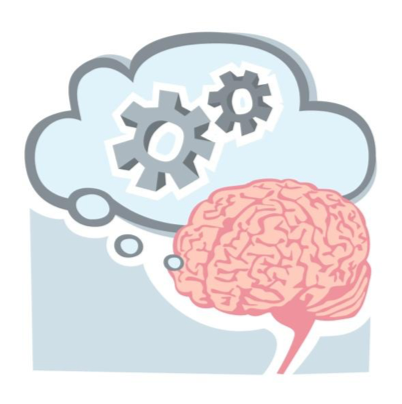Want a quick and easy way to boost your health through menopause and beyond? Vitamin D may be your answer. Let’s explore how this vitamin affects your hormones, bones, brain and heart health.
As we get older, many of us women start to worry about declining health. Some of the most common things I see women worry about are:
- Menopause
- Osteoporosis
- Memory loss (cognitive decline)
- Joint pain
- Heart disease
- Diabetes
- Loss of vitality
- Decline in sexual enjoyment
At any age, and especially as we age, one of the most important considerations for good health and vitality is to make sure your vitamin D level is optimal. This vitamin is critical due to its role in disease prevention, growth and development, and proper hormone function.
How Vitamin D came to be…
By definition a vitamin is a vital substance that your body cannot manufacture, making it necessary to obtain it through your diet. However, with adequate sunlight exposure, our bodies can manufacture Vitamin D on their own. This was not understood yet in 1922 when it was discovered as the substance that could prevent rickets, a bone disease in children, and thus labeled vitamin D. Now that this connection is understood, and much of our food is supplemented, rickets has essentially disappeared in the United States. It was originally dubbed a vitamin, but shortly thereafter, it was discovered that ultraviolet light could increase the levels of vitamin D in certain foods. Eventually, the understanding of how our bodies use sunlight to convert a type of cholesterol into vitamin D became known.
Is Vitamin D is a hormone rather than a vitamin?
Merriam Webster defines a hormone as:
“ A product of living cells that circulates in the body fluids (such as blood)… and produces a specific often stimulatory effect on the activity of cells, usually remote from it’s point of origin.” (1)
In short, hormones act as messengers to stimulate a cell that is remote or apart from where it was produced. This is critical because ours cells need stimulation and regulation to correctly function. Because of this, hormones end up playing a major role in our bodies including regulation of:
- Metabolism and energy production (chemical reactions involved in maintaining the living state of the cells) (2)
- Digestion
- Blood pressure
- Sleep
- Stress response
- Muscle and bone health
- Growth and Reproduction
Let’s look as some of the ways that vitamin D acts like a hormone, as well as some of the other benefits.
What does vitamin D do?
One of the best understood roles of vitamin D is in bone health. There is a connection between vitamin D and calcium, the parathyroid glands, and our bones. Calcium is one of the most abundant minerals in our body and is absolutely necessary for life. It is involved in muscle contractions, including our heart  muscle, blood clotting, and nerve impulses, as well as many other physiologic functions.
muscle, blood clotting, and nerve impulses, as well as many other physiologic functions.
Vitamin D causes calcium to be absorbed from food in our intestines in order to maintain an adequate blood level.
The parathyroid glands are four tiny glands sitting on the back of the thyroid gland in the neck that monitor calcium levels. They are separate and do not affect thyroid function, but get their name from their proximity to the thyroid gland. The parathyroid glands carefully monitor the blood calcium level and if it starts to drop too low, the amount of parathyroid hormone (PTH) in the blood is increased. PTH then goes to the bones and causes them to release some of the calcium stored in the bones, in order to get the blood calcium level back up to the required levels.
Because Vitamin D is a major player in the regulation of calcium absorption and metabolism, you can see how it is a hormone required to keep your bones strong and healthy. Too little Vitamin D can put you at risk for osteoporosis, a condition where the bones become demineralized and weakened.
“Too little vitamin D can put you at risk for osteoporosis, a condition where the bones become demineralized and weakened.”
This vital chemical we call Vitamin D also helps our bodies in other ways:
- Muscles need it to contract and move.
- Nerves need it to carry messages between the brain and every part of the body.
- The immune system needs it to fight of bacteria and viruses.(3)
The importance of magnesium, K2, and Vitamin D in Vitality
Magnesium is an important mineral, also. The conversion of vitamin D to its active form requires magnesium. Vitamin D undergoes transformation in our bodies, starting with the formation of the first stage in our skin when the UVB light acts on 7-dehydrocholesterol from our diet to form either cholecalciferol, also called vitamin D3, or ergocalciferol, called D2.
It then undergoes two more enzymatic conversions to become the most active form in our body, first 25-hydroxy vitamin D (calcifediol), mostly in the liver, and then 1,25-hydroxy vitamin D (calcitriol) mostly in the kidney.(4) Calcitriol is the active hormonal form and interacts with the vitamin D receptors at the cellular level. Magnesium is required in all of these enzymatic changes. If you are having trouble getting your vitamin D level up, it may be due to magnesium deficiency. Magnesium is found in green leafy vegetables, beans, seeds, and nuts. These two nutrients work hand in hand to promote health and vitality.
Another player that works well with vitamin D is vitamin K2, particularly a form called menaquinone 7. This helps to activate the osteoblasts, the cells that build bone and put the calcium into the bone, and decreases the risks of calcium in other places, such as arterial plaque deposits. (5) It reduces heart disease (6) and the incidence of kidney stones.(7) Menaquinone is thought to reduce the risk of hypercalcemia from high doses of vitamin D. It is important to have all the fat soluble vitamins in balance, so taking vitamins A, D, and K2 together are great for bone and heart health.
Vitamin D in relation to sex hormones
Vitamin D interacts with other hormones to regulate their levels. There are many studies showing how vitamin D impacts out sex hormones.
- One study showed that when men were in the low range of vitamin D, if they were given adequate vitamin D supplementation, it raised their testosterone levels. (8)
- In another study of young women, raising the vitamin D levels, helped moderate their estrogen and progesterone levels, which may be protective against breast cancer. (9)
- Low vitamin D levels have been observed to be associated with earlier menarche (start of menstrual periods) in girls. (10)
- Menopausal women have been found to absorb less calcium from their food over time, affected by age and estrogen levels.(11) This can explain the increased risk of osteoporosis in menopausal women. Adequate vitamin D levels can help slow this loss of bone.
So as we can see, adequate vitamin D is necessary for healthy hormonal regulation at all ages.
Vitamin D – Necessary for heart health
Vitamin D play a significant role in heart health as well. Let examine some of the key areas.
- Vitamin D deficiency has been associated with increased risk of hypertension and heart disease.(12) Much of this affect is probably also done through calcium regulation, but calcium supplementation has not had as much benefit as increasing vitamin D levels.
- In one study, men with vitamin D levels below 15 ng/ml were more than twice as likely to have a heart attack as men with a level of 30 or more ng/ml, which is considered generally adequate in adults to prevent disease.(13)
- The role of vitamin D in lowering blood pressure is not entirely clear, however several studies have shown that those with higher levels of vitamin D tend to have less hypertension. (14) More studies are needed to clarify if this is cause and effect.
- Vitamin D also reduces risk of atherosclerosis (hardening of the arteries) and endothelial dysfunction (inflammation of the lining of the arteries), contributors to heart attacks. Vitamin D has anti-inflammatory effects as well.
For a healthy heart, make sure your vitamin D is optimized. Don’t forget its partners, magnesium and vitamin K2 for your healthy heart and arteries.
Vitamin D and Brain health
Nearly all the cells in our body have vitamin D receptors, just as they have other hormonal receptors. This includes the nervous system. Looking at some of the research we can see vitamin D plays a major impact on or brains:
- Low vitamin D is associated with depression.(15), 16)
- Evidence shows improvement of the depression with supplementation of vitamin D. (17)
- Higher levels of schizophrenia are found in a person with low levels of vitamin D.(18)
- A study of outpatient psychiatric patients found lower vitamin D levels in both bipolar and schizophrenic patients, compared to the general population. (19)
- Adequate vitamin D during pregnancy is thought to have a neuroprotective effect for the child, especially in regard to schizophrenia and multiple sclerosis. (20)
One of the largest connections linking vitamin D with brain health is with Alzheimer’s dementia. One recent study found that a low vitamin D level doubled the risk of dementia over a 6 year span in seniors, and a Vitamin D deficiency increased the odds to over 100% increase compared to those with adequate vitamin D levels.(21) More studies are needed to find out how much, if any improvement can be achieved with supplementation, but it certainly speaks loudly that we can do a lot of prevention by getting our levels up before we have the signs and symptoms of brain problems.
Diabetes, the immune system, cancer and vitamin D
Here are a few others areas of our health that vitamin D plays a critical role.
- Having a low vitamin D level can double the risk of diabetes, in susceptible individuals. (22)
- It is also associated with increased insulin resistance, a prediabetic state. For proper metabolism of your sugars and starches, vitamin D is necessary.
- Vitamin D is also important in regulating the immune system, and is being studies in relationship to autoimmune disease.(23) This is especially true in multiple sclerosis, a disease where the nervous system is attacked. Higher levels of vitamin D were found to have a protective effect in Caucasian subjects. (24) Vitamin D is being looked at as part of a treatment regimen for some immune dysfunctions.
- There are also some indications that vitamin D can reduce cancer. One study found lower death from colorectal cancer when the levels were above 80 nmol/L compared to those below 50 nmol/L. (25) Low levels of vitamin D are often found in women with breast cancer and those with lower levels are observed to have more aggressive tumors and metastasis more often. (26)
As more studies are done, the far reaching benefits of adequate vitamin D are being uncovered.
Sources of vitamin D
You can now see how important vitamin D is to your health and vitality. Let’s look at how to get vitamin D, this important nutrient.
Sunlight is our main natural source of vitamin D. In most latitudes, 30 minutes per day of exposure of the face and arms is reasonable. Harvard Medical School has a publication stating that if you live north of the 37th parallel, like I do in Oregon, there is not a sufficient quality to the sunshine to give adequate levels. (27)  This is especially true in the winter months when it is too cold to go outside with enough skin uncovered. Many of us have indoor jobs and cannot get outside during peak sun time. Darker skin pigments also naturally block the UV rays needed for conversion of the vitamin D. Tanning beds are less efficient at producing vitamin D because they have more UVA band wavelengths than the required UVB band, however they can raise the vitamin D some. (28) There are UVB lamps sold for the purpose of raising vitamin D, but I believe there are other benefits to getting natural sunlight.
This is especially true in the winter months when it is too cold to go outside with enough skin uncovered. Many of us have indoor jobs and cannot get outside during peak sun time. Darker skin pigments also naturally block the UV rays needed for conversion of the vitamin D. Tanning beds are less efficient at producing vitamin D because they have more UVA band wavelengths than the required UVB band, however they can raise the vitamin D some. (28) There are UVB lamps sold for the purpose of raising vitamin D, but I believe there are other benefits to getting natural sunlight.
While not as efficient as sunlight, there are also vitamin D food sources such as:
- Cod liver oil

- Oily fish (such as swordfish, salmon, tuna, and sardines)
- Egg yolks
- Liver
- Some mushrooms
- Dairy products or other foods that have been supplemented.
- Pasture raised and organic eggs have been found to have higher levels of vitamin D than from chickens raised indoors.(29)
Though there are vitamin D foods, It is hard to get enough from food sources, unless you take cod liver oil regularly. Most of us in the Northwest will need supplementation with vitamin D3. The only way to know is to have your blood level tested.
Know your number
As you can see, vitamin D is truly vital to good health. I believe everyone should know their vitamin D levels as it is a simple lab test. I run across Oregonians that are quite Vitamin D deficient at times, and usually feel better on improving this. Most labs give a reference range of 30-100 ng/ml for vitamin D 25-OH, but 50-80 ng/ml is believed to be a more optimal range for health.
How much should you take?
There are many factors that can affect your vitamin D level, such as your skin color, exposure to natural sunlight, latitude, diet, and vitamin D receptor status. That makes the blanket recommendation for supplementation inadequate. The government RDA (recommended daily allowance) is currently 600-800 IU/day for adults, without reference to race or geographical location, as you can see in the graph below. Remember that these represent minimum levels to prevent overt disease like rickets in children, but have not been studied for long term disease prevention such as cardiovascular health or dementia.
| Table 2: Recommended Dietary Allowances (RDAs) for Vitamin D [1] | ||||
| Age | Male | Female | Pregnancy | Lactation |
| 0–12 months* | 400 IU (10 mcg) |
400 IU (10 mcg) |
||
| 1–13 years | 600 IU (15 mcg) |
600 IU (15 mcg) |
||
| 14–18 years | 600 IU (15 mcg) |
600 IU (15 mcg) |
600 IU (15 mcg) |
600 IU (15 mcg) |
| 19–50 years | 600 IU (15 mcg) |
600 IU (15 mcg) |
600 IU (15 mcg) |
600 IU (15 mcg) |
| 51–70 years | 600 IU (15 mcg) |
600 IU (15 mcg) |
||
| >70 years | 800 IU (20 mcg) |
800 IU (20 mcg) |
||
* Adequate Intake (AI) – Taken from National Institutes of Health Factsheet (30)
Here in the Northwest, due to our cloudy skies and northern latitudes, I find those ranges of supplementation are not adequate for most. Some people require around 4,000 to 5,000 IU per day of D3 to get into a desirable range. Again, if you live in Florida, and spend a lot of time in the sun, you may not need any supplementation. I find some people need 10,000 IU per day for a while, if they have high Vitamin D deficiency. Some have mutations in their vitamin D receptors and may require higher doses as well. This is one reason it is critical to know your levels before dosing.
“It is critical to know your levels before dosing.”
Can you take too much?
There are sketchy reports of vitamin D toxicity. The biggest legitimate concern appears to be its ability to raised serum calcium. The concern is that it will increase calcification of the arteries or other soft tissues, or produce kidney stones. As noted, this can be prevented by taking adequate vitamin K2M7 with it, usually in the range of 100-200 mg/day. It should also be balanced with adequate vitamin A. (31) They are both fat soluble and if an excess of vitamin D is taken in, it can lower the levels of vitamin A, unless there is an adequate intake. A good food source of this is getting lots of beta carotene foods in your diet, such as carrots, yams, butternut squash, tomatoes, oranges, egg yolks, and other bright yellow and orange foods.

You can now see how vitamin D is connected to our hormonal health and vitality.
Key takeaways:
- Get plenty of sunshine
- Get your blood level checked
- Balance vitamins A, D, and K
- Get adequate dietary calcium and magnesium
- Eat fish, leafy greens, and orange vegetables with a new understanding!
Now I’d like to hear from you. How often do you get your vitamin D levels tested? Do you take a supplement? Let us know in the comments!




